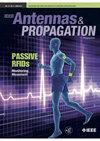Benchmarking and Reproducibility in Computational and Experimental Characterization of Electronic Packages for Signal/Power Integrity: Four benchmarks serve as standardized cases
IF 5.7
4区 计算机科学
Q2 ENGINEERING, ELECTRICAL & ELECTRONIC
引用次数: 0
Abstract
This article describes current initiatives to form benchmarks for the characterization of electronic packages. Four available benchmarks representing typical cases for signal integrity (SI) and power integrity (PI) analysis and varying in complexity from simple microstrip line to a full package model are intended to serve as standardized cases for testing the performance and accuracy of the modeling tools. While the benchmarks, consisting of CAD model files as well as simulated and measured network parameters, are publicly available and described in the accompanying manual, the emphasis in this article is on the description of challenges encountered in creating measured data, the development of modeling capabilities in the computational tools essential for accurate and expedient electromagnetic (EM) analysis of the benchmarks, and common practices going into matching of the simulated to the measured data. Ongoing efforts toward the standardization of densely packed interconnects for die-to-die interfacing on advanced packages, also known as信号/电源完整性电子封装的计算和实验表征中的基准和可重复性:四个基准作为标准化案例
本文描述了目前形成电子封装特性基准的计划。四个可用基准代表信号完整性(SI)和功率完整性(PI)分析的典型案例,从简单的微带线到全封装模型的复杂程度各不相同,旨在作为测试建模工具的性能和准确性的标准化案例。虽然由CAD模型文件以及模拟和测量的网络参数组成的基准是公开可用的,并在附带的手册中进行了描述,但本文的重点是描述在创建测量数据时遇到的挑战,以及在计算工具中建模能力的发展,这些计算工具对于准确和方便的电磁(EM)分析基准至关重要。并对模拟数据与实测数据的匹配进行了探讨。在开放计算项目(OCP)的背景下,正在进行的针对高级封装上的模对模接口的密集封装互连的标准化工作,也称为异构集成(HI)。本文还概述了对机器学习(ML)辅助高速通道表征的测试用例和训练数据集的基准测试和标准化的新需求。
本文章由计算机程序翻译,如有差异,请以英文原文为准。
求助全文
约1分钟内获得全文
求助全文
来源期刊

IEEE Antennas and Propagation Magazine
工程技术-工程:电子与电气
CiteScore
7.00
自引率
5.70%
发文量
186
审稿时长
3 months
期刊介绍:
IEEE Antennas and Propagation Magazine actively solicits feature articles that describe engineering activities taking place in industry, government, and universities. All feature articles are subject to peer review. Emphasis is placed on providing the reader with a general understanding of either a particular subject or of the technical challenges being addressed by various organizations, as well as their capabilities to cope with these challenges. Articles presenting new results, review, tutorial, and historical articles are welcome, as are articles describing examples of good engineering. The technical field of interest of the Magazine is the same as the IEEE Antennas and Propagation Society, and includes the following: antennas, including analysis, design, development, measurement, and testing; radiation, propagation, and the interaction of electromagnetic waves with discrete and continuous media; and applications and systems pertinent to antennas, propagation, and sensing, such as applied optics, millimeter- and sub-millimeter-wave techniques, antenna signal processing and control, radio astronomy, and propagation and radiation aspects of terrestrial and space-based communication, including wireless, mobile, satellite, and telecommunications.
 求助内容:
求助内容: 应助结果提醒方式:
应助结果提醒方式:


